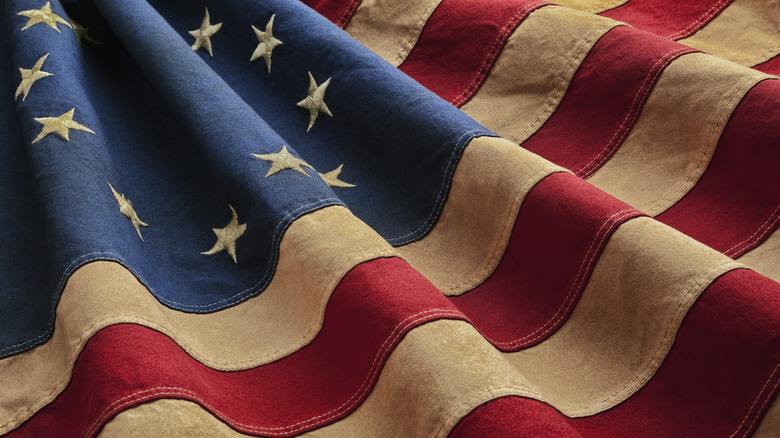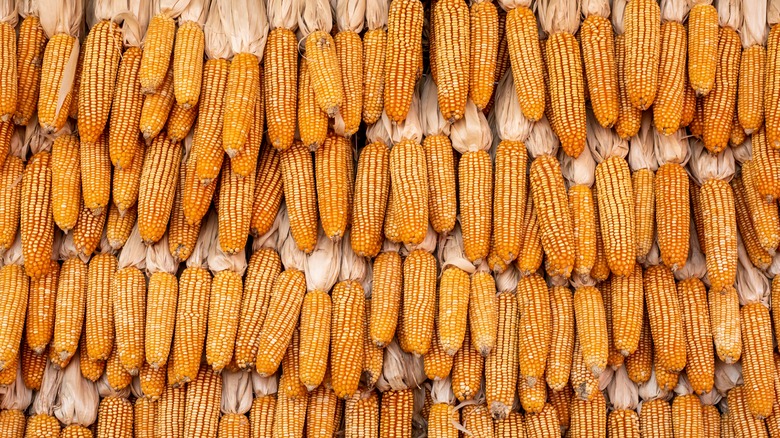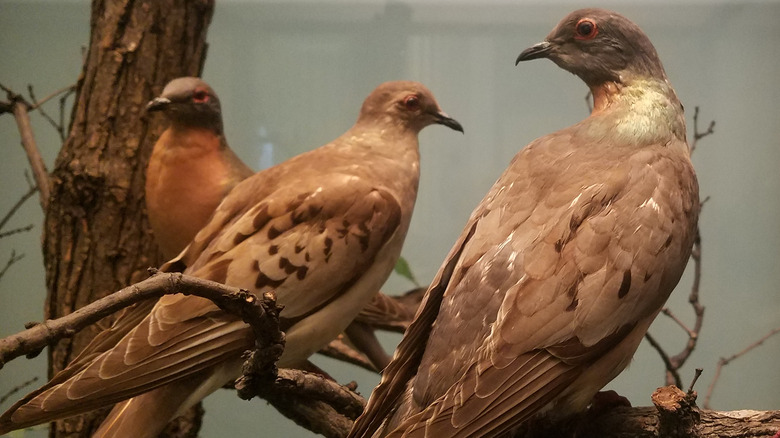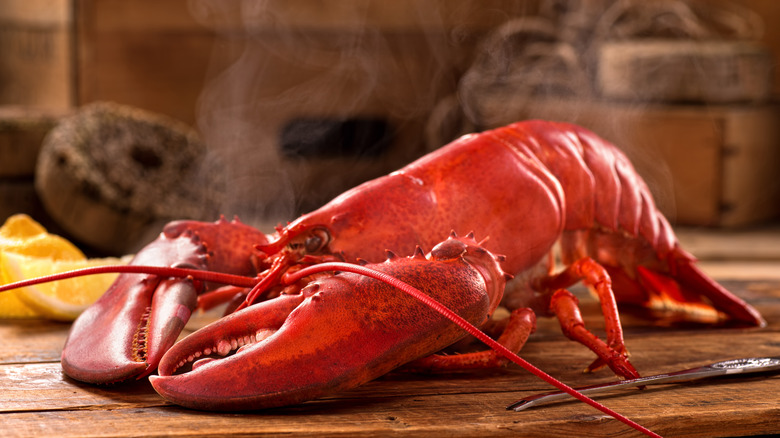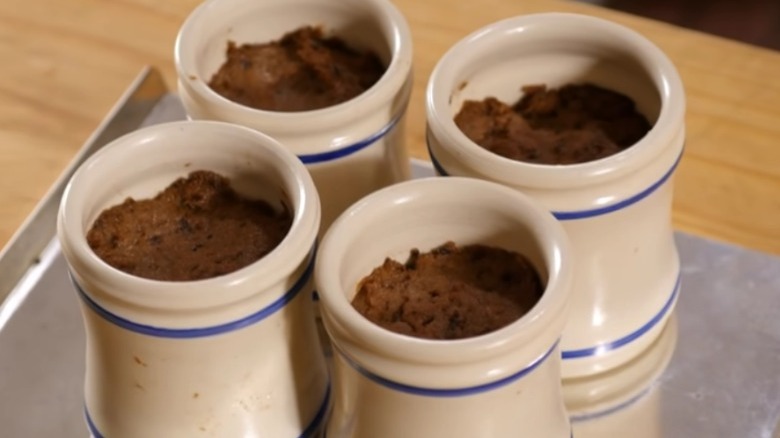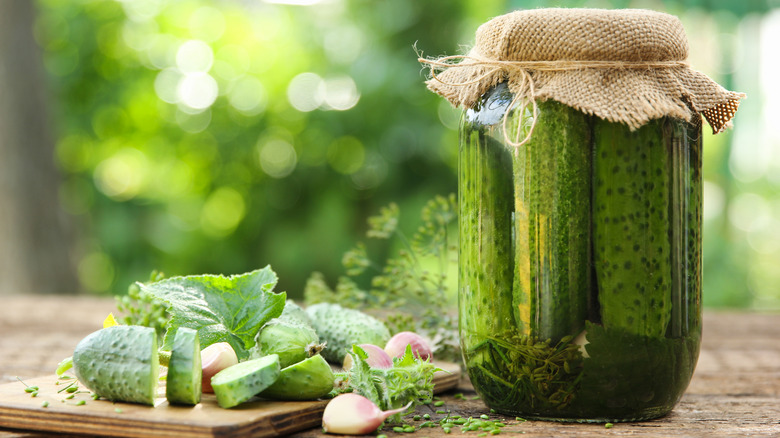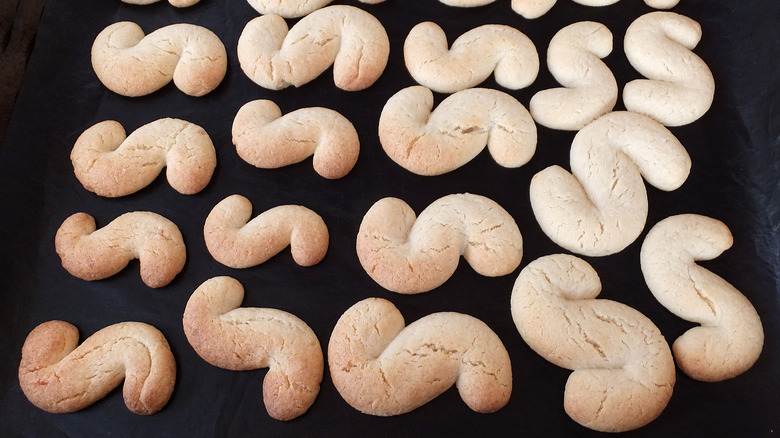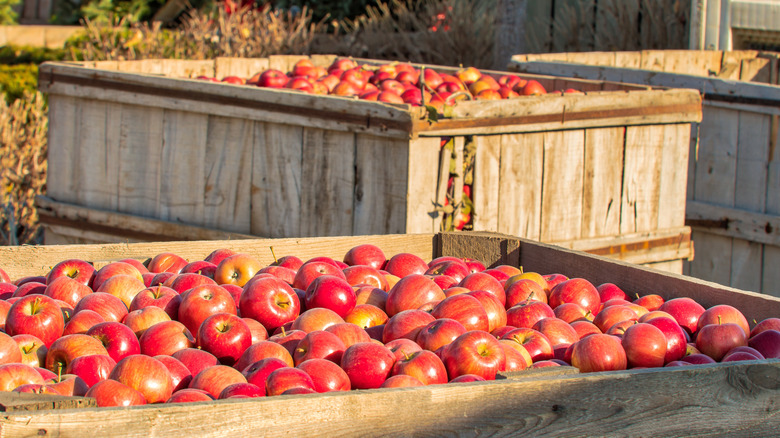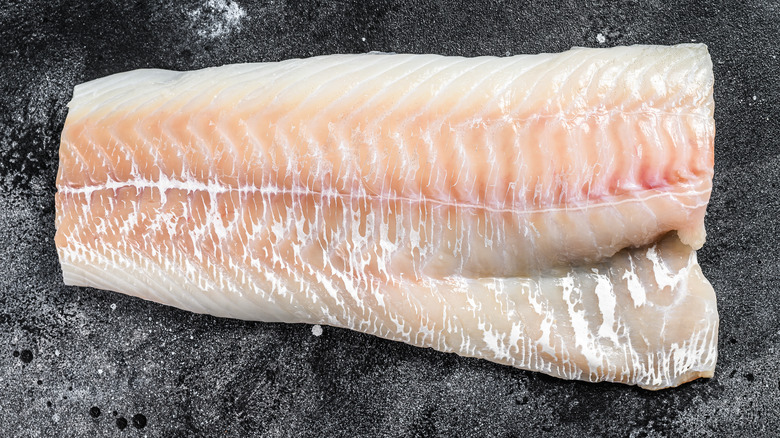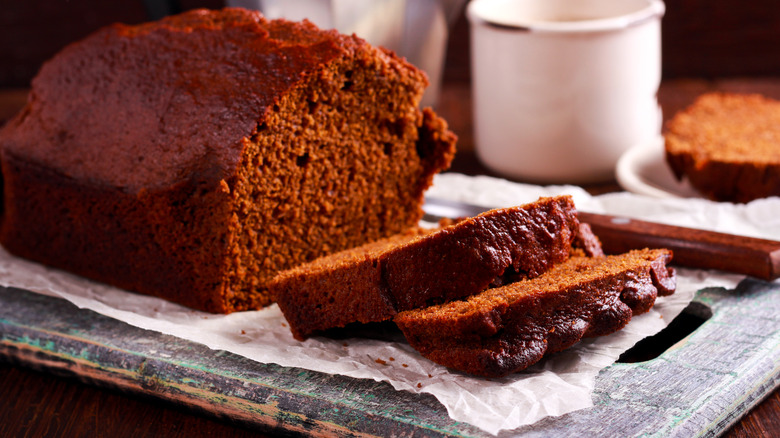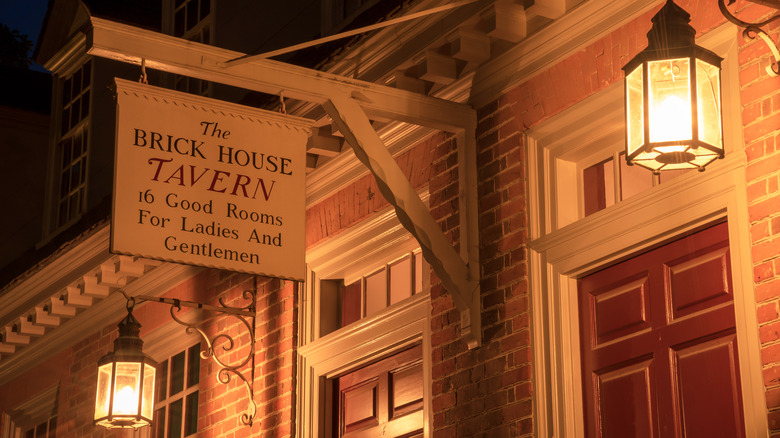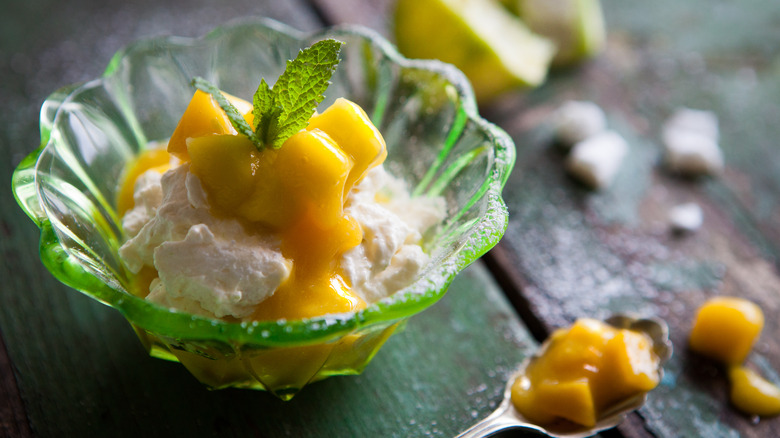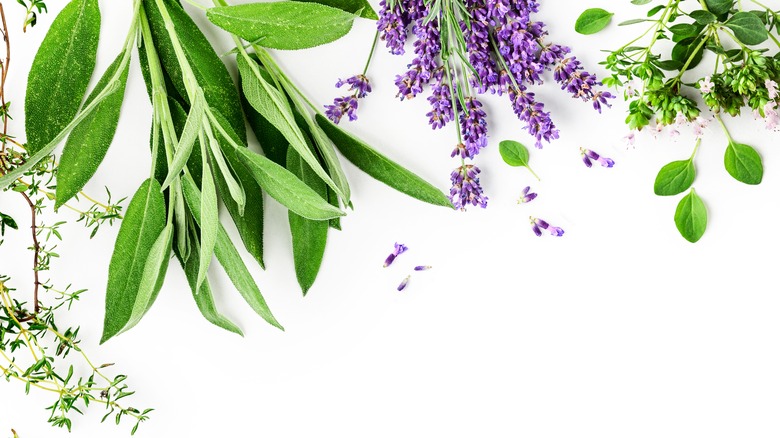The Most Popular Foods Eaten In The 13 Colonies
Food is intrinsically tied to geography and culture. America is known for its staples today, whether it is New York style pizza or a Detroit Coney dog. However, these dishes have histories tied to them from the immigrants that brought these famous foods with their unique ways of cooking over to America.
So, what was the first diet like for an American living in one of the 13 original colonies? Well, it was certainly more rustic than a cheeseburger but still contained some key ingredients that might be found on top of one. Initially, food was scarce amongst the first settlers in the New World. Once the colonies became more established however, Americans were able to focus and rely on homegrown or locally sourced food, which created significant regional variants of diets across the original colonies.
While distinct dietary differences existed amongst the New England, middle, and southern regions, according to educator resource Students of History, it was largely due to climate, culture, and economy. Even with these regional gaps, there were still some unifying foods, imported or otherwise, that the New World likely all shared together at their separate tables. Here are some of the most popular foods eaten in the 13 colonies.
Corn
Okay, everyone saw this one coming, right? The stereotypical, ingrained image of corn and the colonies holds true to its elementary level of myth. The technique of growing corn was taught to settlers by the Native Americans, who according to NCPedia, is widely accepted as a pivotal event that essentially saved the colonies from starvation. Corn really became the first bedrock of American agricultural practice.
Once the craft was mastered, corn quickly was made a staple in colonial cooking and economics. Once Indigenous leaders like Squanto had taught the colonists how to grow corn and use it to make cornmeal, as per "Everyday Life," by Walter A Hazen, it took off like wildfire across the settlements. All 13 colonies used the crop for cornmeal, an ingredient that held various dishes together such as johnnycakes, which were basically pancakes, and hasty pudding, a porridge made with corn that was cooked in water or preferably milk. These dishes were enjoyed by everybody in colonial society. As time passed, their skill for growing corn spread to other key American crops including wheat, barley, oats, rice, pumpkins, beans, and squash.
Wild Game
Inhabitants of all 13 colonies relied heavily on the dense amount of wild game found in the vast, unexplored forests of the New World for a source of fresh food. Wild game was oftentimes the main dish satiating the colonial appetite, as History revealed Americans were hunting animals such as deer, rabbit, turkey, and even pigeon in droves.
This heavy-handed amount of hunting created a largely meat-based diet for the colonies. They killed what they could and ate what they would. In regards to a more modern diet, pigeon certainly sticks out from the rest of the usual game. And, apparently pigeon hunting was such a popular sport, NPR revealed this behavior caused a specific breed of bird known as the passenger pigeon to go extinct. At the time, they were plentiful, so much so that one could go into a market and buy a passenger pigeon for mere pennies. Colonial Americans enjoyed eating this bird in many ways, including roasting it, baking it, adding it to a stew, or even sticking it into a pie. Once the bird went extinct due to overconsumption, the chicken replaced it on the dinner table and in the American marketplace.
Lobster
Another plentiful source of food for the colonists was lobster. In fact, according to History, there were so many lobster when the first settlers came to America that they washed up ashore in droves, nearing piles that reached up to 2 feet high. This simultaneously made the lobster a saving grace during difficult seasonal droughts, and it also made it a poor man's meat due to its overabundance and subsequent cheap price in the marketplace.
The Native Americans utilized the lobster to fertilize their crops, and they also cooked and ate them alongside seaweed. As for the colonists, eventually the number of lobsters literally washing ashore wasn't enough, so they developed fishing boats specifically designed for crustacean catching called smacks. The men who ran these boats were known as smackmen and pulled in such large amounts of lobster that the 13 colonies didn't know what to do with it. So what they ended up deciding on was to feed lobster to slaves, prisoners, and indentured servants. In fact, it became such a big deal that certain servants sought a limit to their weekly crustacean intake to their diets as requirements for servitude in the colonies.
This is hard to believe with lobster being considered a delicacy nowadays, but during colonial times, it was prisoner food.
Potted meat
Not everything that was killed, harvested, or bought in the colonies was to be eaten right away. This was a time before refrigeration, so a certain level of craftiness was needed in the colonies in order to make their food last. According to the George Washington Foundation, this gave rise to a popular method of preservation and subsequent food item known as potted meat. Potted meat was essentially cuts and parts of various animals that were lightly cooked and tightly sealed in a jar with butter or lard, allowing its shelf life to last for months.
When ready to eat, the potted meat could be unsealed and served as a dish that certainly found itself within all 13 colonies. Meat also gained a prolonged shelf life, according to D. M. Kinsman's, "Meat Preparation and Preservation in Colonial America," by method of what he deemed the "Three S's," which involved the use of salt, smoke, and snow. Utilizing the elements around them became paramount in the preservation and survival of the 13 colonies. The "Three S's" are just one combined example of how methods were enacted to increase food shelf life. Also, in all honesty – salty, smoky meat, sounds American enough, right?
Pickled food
Another method of preservation that influenced the dinner table was the long-standing tradition of pickling food, notes Oregon State University. This involved placing either fruits, vegetables, or meat inside wooden barrels or casks that were filled with brine. Pickled foods went hand in hand with potted or preserved meats at the dinner table and were often seasoned with simple spices and salt.
Pickling was a process that provided comfort in times of food shortages or poor seasons. Additionally, it had a bit of a booming business about it around the 17th century. According to the History Channel, Dutch farmers in New York started growing cucumbers in the 1650s. Their crops were then pickled and sold by dealers on the street, marking the beginnings of the pickle industry.
Whether it was for business or simply survival, using the elements of their surroundings was paramount in defining the types of dishes made available during colonial times, and it is what made pickled food so popular to so many people in the New World.
Jumble Cookies
It wasn't all salty meat and pickled vegetables in the colonies, as the settlers still had retained a sweet tooth from back home. Jumble cookies, along with a host of other English sweet recipes, were brought over and adopted into the New World.
Jumble cookies are believed to have come across on the Mayflower and therefore have an intrinsic colonial identity, spreading from Maryland onward into the other areas of America. Martha Washington, first lady to President George Washington, was documented by Preservation Maryland to have had her own special Jumble cookie recipe.
The cookie itself was mostly made up of eggs, flour, sugar, milk, and maybe some caraway seeds. A recipe from Eliza Smith's "The Compleat Housewife: or Accomplished Gentlewoman's Companion" whips up the details on how to make their preferred style of a Jumble cookie, in case you are interested in attempting to top Washington's batch.
The Jumble cookie is a perfect example of how the 13 colonies relied on their roots back in England via imported goods in order to make or recreate recipes that took on an American flavor over time.
Alcohol
In spite of the Puritan roots carried over and planted by the first settlers of the New World, all 13 colonies consumed a variety of different forms of alcohol and found numerous ways to produce it. Some of these methods included crushing apples and fermenting them into hard cider, or turning corn into whiskey, according to JSTOR Daily, which is still a practice done to this day and has been perfected through the distillation of bourbon.
Aside from utilizing local ingredients such as corn and apples to make alcoholic drinks, the colonies relied on the importation of certain goods in order to widen the palate of accessible alcohol. Harvard's Arcadia Fellow Theresa McCulla in her essay, "Food in Colonial North America," explores the inside of colonial diaries and merchant's handbooks to reveal things like how imported molasses was oftentimes used to create rum. She also mentions that hard cider and corn whiskey were popular alcoholic beverages of the time. Perhaps most interestingly, there is evidence that honey was used to make metheglin in the New World, which was originally a Welsh spiced mead.
Alcohol of all kinds permeated the colonial diet. It has a long history of consumption throughout many societies, and the 13 original colonies were no exception. While enduring such a rugged and difficult life, one can only imagine that a hard cider or some Welsh mead was a welcome reprieve to many colonial people.
Codfish
Being located near the ocean, many coastal colonies contained strong seafood influences in their diet. The fishing was plentiful; anything from sturgeon, seals, flounder, herring, and more were common catches for colonialists, as per Revolutionary War Journal. Codfish was by far the most popular to be caught, cooked, and sold. According to "Colonial New England Recipes," a famous and widely used technique was baking the codfish with various vegetables and herbs like onions and thyme.
The codfish found itself not only on New Englander's dinner tables but also being shipped for exportation, as well as inadvertently winning a war. Codfish was significantly the 13 colonies largest export to other countries (via New England Historical Society). Largely due to this demand, John Adams saw a naval opportunity out of all of the fishermen, their boats, and marinas. These could and would be incentivized to turn into a navy to fight the Revolutionary War. So, thank you codfish.
Additionally, once codfish was dried it became around 80% protein and was a major export to Catholic countries in Europe during periods of religious fasting. Ultimately, the codfish supplied food, money, and eventually an army for the American people, making it a very important piece of historically interesting colonial food.
Pepper cake
One popular recipe that relied more heavily on imported ingredients was pepper cake, as per History. It primarily used pepper as a preservative and molasses as a sweetening agent. Think of the toughest gingerbread man you can imagine, and that is pepper cake. The cake was lauded not only for flavor but for its ability to hold for months and sometimes over a year.
So, just exactly how is this immortal molasses-filled cake concocted? Well, luckily Martha Washington was passed down a recipe in 1749 from her first marriage. Washington's work, "A Booke of Cookery," was thought to be brought to light during the latter half of the 17th century, and has an excellent pepper cake recipe.
Four Pounds Flour actually tested the shelf life of this wonder bread, with it aging up to six months.
The important thing to remember is that the 13 colonies not only needed to use the imports they were receiving through trade, they needed to make their food last. Pepper cake is an all-star of everything a colonialist was looking for in food.
Local Tavern Food
As The Gettysburg Historical Journal details, taverns popped up all around the rugged, colonial landscape, offering warmth and reprieve from the arduous traveling conditions of the time. Taverns also served many purposes within a town or city, as they became a hub for idea sharing and political organization. Although these central spots offered warmth and company, it oftentimes had a great deal to do with the food being served that kept customers coming back.
According to the National Women's History Museum, even colonists wanted "fast food." One could expect a variety of dishes served at their preferred tavern. These quick bites typically included bacon, ham, and other pork products, namely due to the fact that they were fast, cheap, and easy to preserve. Hot biscuits were also certainly a popular tavern menu item.
"The Colonial Williamsburg Tavern Cookbook," by former Colonial Williamsburg Executive Chef John Gonzales, details some fantastic tavern dishes of the colonial era, and perhaps more importantly, how to make them. Gonzales reveals that taverns sold sweet potato muffins, steak stuffed with oysters, and for dessert, chocolate pecan pie.
Syllabub
Alcohol and dessert all in one? Syllabub was a quick colonial classic recipe found aplenty but always required two things: sugar and wine. This dish was literally whipped up for special occasions, containing whipped cream and some kind of citrus for acidity.
As noted by Colonial Williamsburg, syllabub relied on the sweetness of the sugary whipped cream, some acidic citrus, and alcohol to create a dessert that kept an individual coming back for another bite. It was a delicacy well known throughout the 13 colonies, oftentimes served as a centerpiece inside serving glasses stacked or orchestrated elegantly.
Amelia Simmons' "American Cookery" offers a host of syllabub options ranging from whipped raspberry cream to lemon cream in order to recreate popular variations of this colonial classic, with each list of ingredients calling for a heavy pour of booze to be sure one catches a delicious buzz as well.
Herbs
While most food was likely bland or depending on the essence of natural flavor of whatever was being eaten, the colonists still spiced and flavored things up. According to the Union Forge Heritage Association, a colonial garden would have included things like basil, sage, caraway, chives, and dill, to name a few. These herbs were used to cook, clean, and at times were applied medicinally. What they were mostly used for in cooking pertained to pies, spiced meats, and soups.
Colonists were able to use plant life for a range of things like tea and balm. According to the Daily Progress, when Americans boycotted British teas, they turned to the Oswego Indians to learn brewing methods, like with the wild bergamot mint.
Many of the base herbs were used to season meat and added to salads, and oils were extracted for cooking. And for those colonists who could afford them, herbs and spices were imported to satisfy those looking to cook beyond the typical colony fare or for those who couldn't maintain a garden due to colder weather.
These simple but practical applications of herbs added an important flavor identity to the colonial diet, creating flavor diversity in the face of bland and one dimensional cooking.
